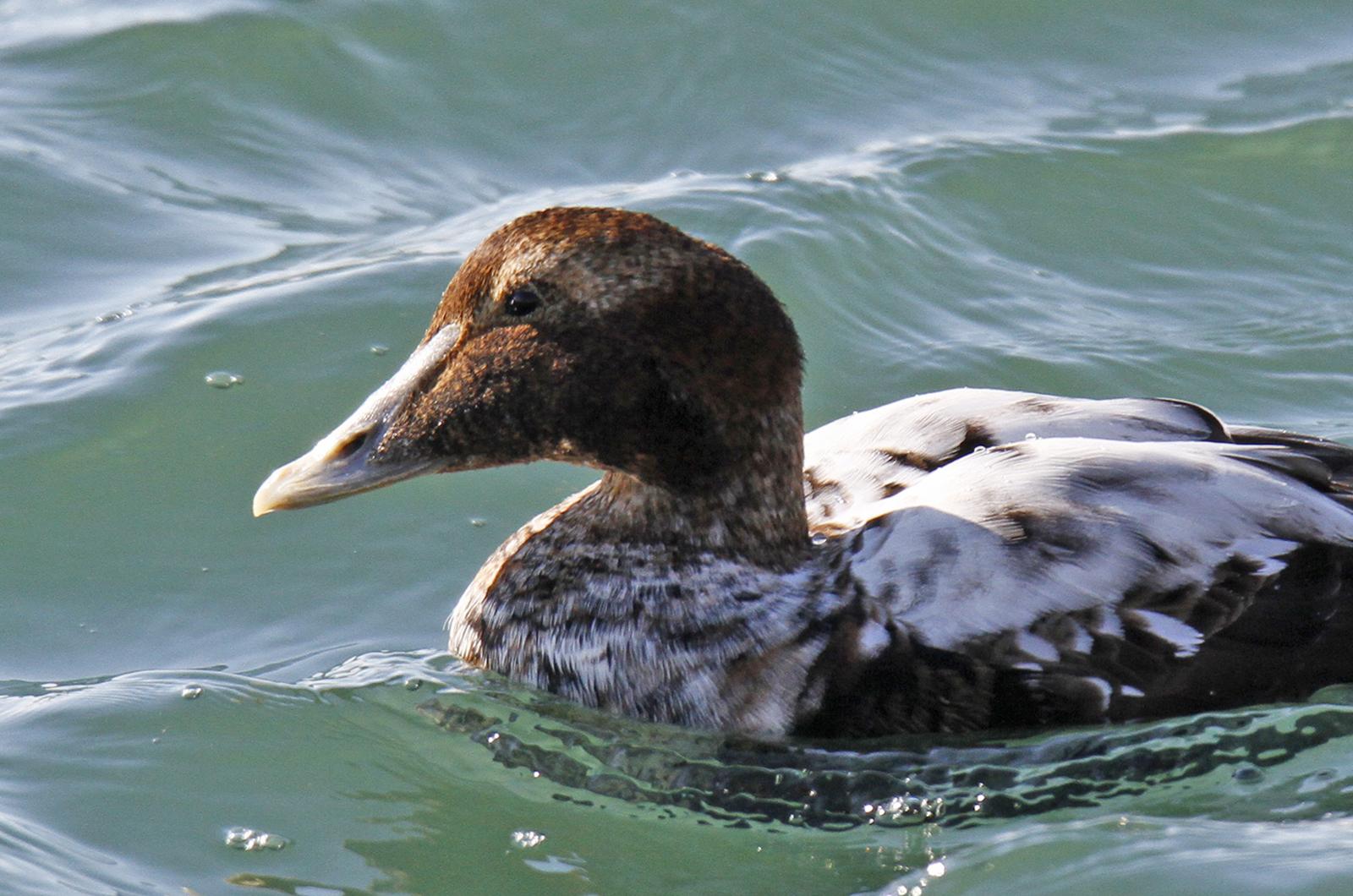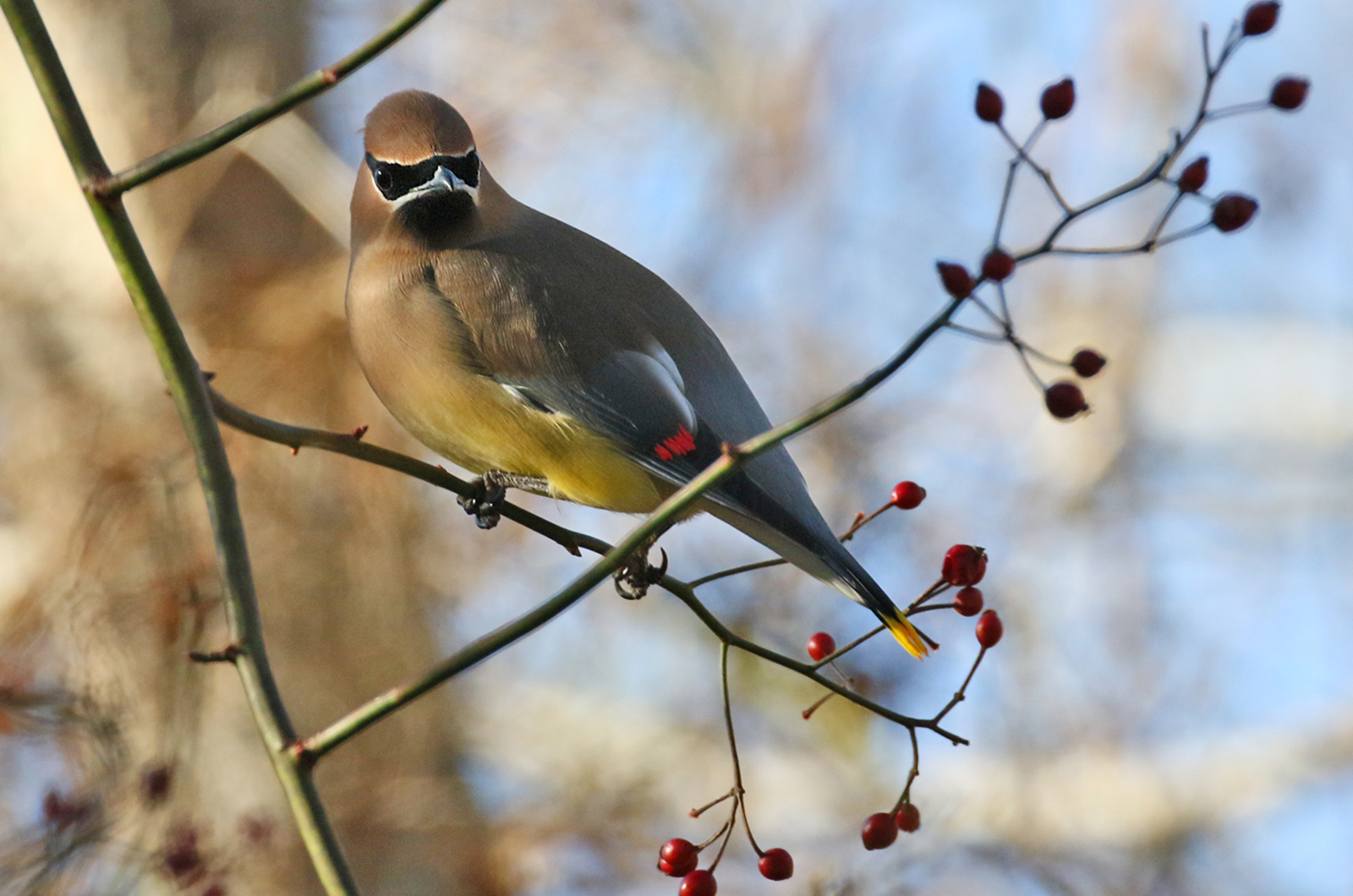Hear then see.
During their northward migration and the nesting season, we hear birds before we see them because birds are singing to defend their territory and attract mates. Singing is less frequent now on their southbound migration.
The cedar waxwing is different. I use their high-pitched trilled or rolling call to locate them year-round. Although they are here year-round some are migrating southward now, passing through the Vineyard from their more northern nesting grounds. The Gay Head Cliffs are a great place to observe these and other migrants, because the birds may be hesitant to fly over the ocean; they may fly along the bluffs or out over the ocean only to chicken out and circle back to land. They accumulate until they are bold enough to head across the water to Cuttyhunk, Rhode Island or Block Island.
David Benvent counted a flock of 618 cedar waxwings flying around the Gay Head Cliffs on August 11. Two days later, Sky Kardell counted 160, while Nancy Nordin only spotted eight there on August 17. Their numbers can also vary by the minute as a flock leaves the island!
Bobolinks and red-winged blackbirds are another species that may be heard before they are seen. For bobolinks, David Benvent counted a flock of 16 on August 11, Sky Kardell found four on August 14 and Charles Morano only saw one on August 16. For red-wings, David Benvent found 432 on August 11, 75 the next day and 166 on August 13, Sky Kardell counted 80 on August 14 and Charles Morano found 18 on August 16.
Swallows are also prevalent at the Cliffs. David Benvent spotted 82 barn swallows, four tree swallows, one bank swallow, eight of the much less common cliff swallows and four of the larger purple martins, Charles Morano saw nine barn and one tree swallow on August 16.
David Benvent also spotted 29 eastern kingbirds, one eastern phoebe, one eastern wood-pewee and one blue-gray gnatcatcher on August 11 and he saw the latter species again on August 13, the same day that Sky Kardell spotted a gnatcatcher there.
Bird Sightings
Shorebirds continue to migrate through. The following species are widely found by multiple observers on beaches from State Beach to Cape Poge to Menemsha: American oystercatcher, killdeer, black-bellied plover, piping plover, semipalmated plover, willet, short-billed dowitcher, spotted sandpipper, greater and lesser yellowlegs, ruddy turnstones, sanderlings, least sandpiper and semipalmated sandpipers.
Less common shorebird sightings include Lanny McDowell’s whimbrel at Norton Point on August 11, Thaw Malin and Cynthia Bloomquist spotted three pectoral sandpipers at Butler’s Mudhole on August 12, Allan Keith observed one marbled godwit on Norton Point and it’s close relative a Hudsonian godwit at East Beach on August 12, Chris Scott found three solitary sandpipers at the Mudhole on August 14, the same spot where Bridget Dunnigan and Sea Williams located one on August 16, Walt Looney identified a stilt sandpiper within a flock of greater yellowlegs for comparison at the Mudhole on August 15 and, last but not least, Sky Kardell saw a Baird’s sandpiper at Long Cove on August 18 and Francesca Zeta also spotted it there that day.
Immature yellow-crowned night-herons—a slightly different plumage and shape from the much more common immature black-crowned night heron—have been reported at or near Sheriff’s Meadow Sanctuary this week. Nancy Weaver found one on August 11, Walt Looney, Bridget Dunnigan and Sea Williams saw one on August 16, Judd Nathan located one on August 18, the same day that Dahlia Rudavsky and Bob Jampol spotted three.
Steve Allen spotted an immature little blue heron—it is white and looks similar to a snowy egret, except for leg and bill color—at Felix Neck on August 12.
Cuckoos are more common this summer. Bridget Dunnigan and Sea Williams spotted one yellow-billed cuckoo at Tea Lane on August 13, Carine Mitchell found another along East Pasture Road in Aquinnah on August 14 and Susan Whiting located one on Old Fields Path in Chilmark on August 14. Jillayne Wheeler heard two black-billed cuckoos at the Island Grown Initiative’s Farm on August 15 and I heard one near Ames Pond at Cedar Tree Neck on August 17.
Shearwaters were spotted this week at the western end of the Island. David Benvent spotted two Cory’s, one Manx and four others on August 11 from the Gay Head Cliffs, Carine Mitchell saw six sooty shearwaters from Philbin Beach on August 13 and Sky Kardell found two Cory’s shearwaters from the Gay Head Cliffs on August 13.
Small numbers of seaducks can be seen along just about any shoreline. Immature male common eiders are around but remember they do not look like the adults that are numerous winter residents. Common loons and all three species of scoters—stocky mostly black ducks—are present in small numbers.
Warblers are less conspicuous now than they were a few weeks ago; they are still here but they are usually silent and therefore harder to detect. The most common ones are yellow warblers and common yellowthroats. David Benvent did well at the Gay Head Cliffs, spotting one black-and-white, four yellowthroat, one American redstart, one Cape May, 17 yellow and one prairie warbler on August 11 and he added one ovenbird near Pond Road in West Tisbury on August 13. Sky Kardell found two blue-winged, six yellowthroat, one Cape May, one northern parula, 10 yellow and two prairie warblers at the Gay Head Cliffs on August 13, Susan Whiting found a yellow and a prairie warbler at Old Fields Path on August 14 and Sea Williams and Bridget Dunnigan located two yellowthroats and one pine warbler at Felix Neck on August 16, while Nancy Nordin had an ovenbird visit her yard on August 16.
Finally, a quick reminder that if you want to learn more about identifying birds, the MV Bird Club has a bird walk at August 26 at Eel Pond and the Felix Neck Early Birders meet every Thursday morning at 8 a.m. at Felix Neck.
Please email your sightings to birds@vineyardgazette.com.
Robert Culbert is an ecological consultant with Nature Watch living in Vineyard Haven.







Comments
Comment policy »